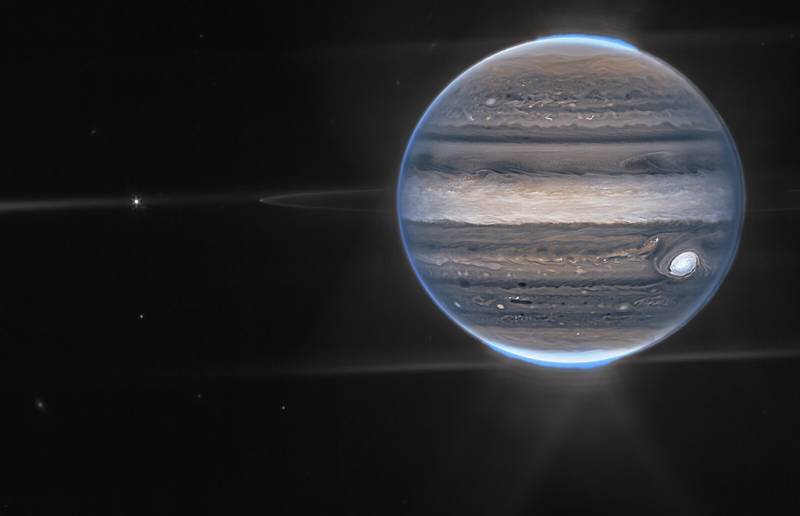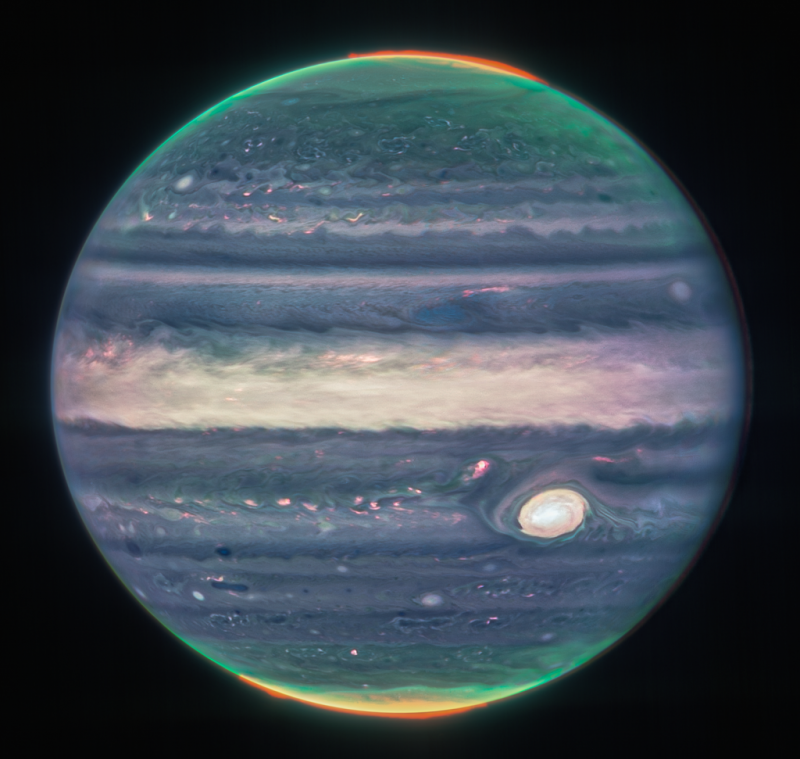The world’s newest and biggest space telescope is showing Jupiter as never before, auroras and all.
Scientists released the shots Monday of the solar system’s biggest planet.
The James Webb Space Telescope took the photos in July, capturing unprecedented views of Jupiter’s northern and southern lights, and swirling polar haze. Jupiter’s Great Red Spot, a storm big enough to swallow Earth, stands out brightly alongside countless smaller storms.
One wide-field picture is particularly dramatic, showing the faint rings around the planet, as well as two tiny moons against a glittering background of galaxies.
“We’ve never seen Jupiter like this. It’s all quite incredible,” said planetary astronomer Imke de Pater, of the University of California, Berkeley, who helped lead the observations.

